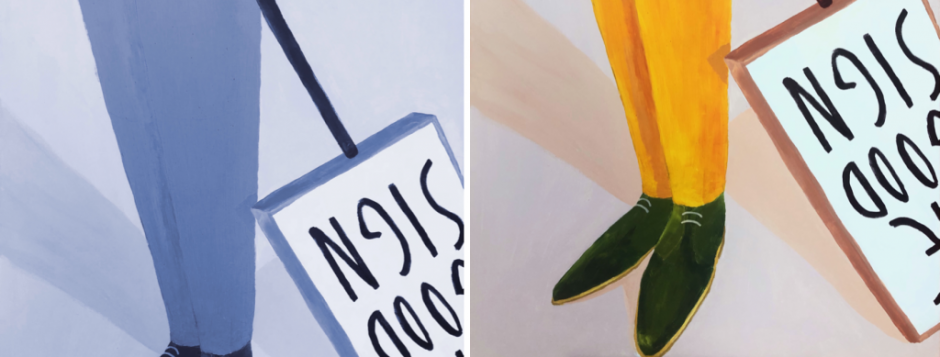Addressing Racism
What are meaningful activities that address and ultimately end institutional racism in Higher Education? How can we engage with, learn and teach about the topic without reinforcing stereotypes, institutional inequities, or triggering counterproductive fatigue? As a ‘white other’, a German immigrant not directly experiencing racial oppression, I reflect on the approaches of the set resources through the lens of anti-racism.
Both Bradbury and Garrett (2020, 2024) argue that racism in higher education must be recognised as systemic rather than incidental. This perspective shifts responsibility from individuals to institutional structures, requiring universities to rethink policies, curricula, and assessment practices that marginalise racialised learners. Bradbury, for example, highlights the importance of explicitly naming racism as institutional rather than masking it, postioning policy as a site for transformation.
Leadership commitment and accountability are essential. Garrett (2024) calls for university leaders to make anti-racism a strategic priority, backed by funding, staff time, and measurable goals. Publishing detailed data on racial disparities can help identify and address systemic biases. Equally, definitions of ‘excellence’ and success should be reimagined to value multilingualism and the cultural capital of racialised communities (Bradbury, 2020; Garrett, 2024).
Methodologically, critical race theory (CRT) offers a powerful lens to reveal hidden structures of racism, while intersectionality helps show how race intersects with other aspects of identity in shaping academic experiences (Bradbury, 2020; Garrett, 2024).
Beyond structural reform, cultural change is necessary. For creating genuinely inclusive academic spaces, Garrett (2024) suggests including the perspectives of racialised minority researchers in curricula and decision-making, alongside improving mentoring and networks. Similarly, Sadiq (2023), critiquing diversity training, argues for moving beyond stereotypes and tokenism by embracing lived experiences and disagreements rather than seeking forced consensus. He stresses experiential learning and storytelling over lectures and the need for psychological safety so staff can openly discuss race without fear of making mistakes. Finally, diversity work, he adds, must also be localised; one-size-fits-all initiatives risk overlooking regional and community contexts.

Among the media resources, one supports and the other criticises anti-racism measures, reflecting opposing implicit positionalities.
Channel 4’s positionality is that of a progressive, public-service media organisation using documentary storytelling to challenge racism. Channel 4 (2020) documents an educational intervention where students participate in a ‘race’ activity, stepping forward or back in response to questions revealing societal privilege. Each student ends up with a different starting position. Asked, “Is this fair?”, none says yes. The exercise makes structural inequality visible and shows racism isn’t only explicit hatred but also unconscious bias. White students are encouraged to recognise their privilege and become active allies. The approach aligns with Sadiq’s (2023) emphasis on experiential learning and storytelling, aiming to foster empathy and solidarity rather than guilt.
In contrast, The Telegraph’s film by Orr (2022) adopts a skeptical, even oppositional stance towards anti‑racism initiatives in UK universities. It frames equality education (Advance HE) as ideologically motivated threats to free speech and academic freedom. From an anti‑racist perspective, this reflects a conservative stance that protects the status quo and questions the legitimacy of anti‑racist work. The title, “Turning universities woke”, frames ‘woke’ pejoratively, suggesting excessive political correctness. Notably, when Orr asks a student, “Do you feel woke really? What do you think that term means?”, the student replies, “If it’s like culturally competent and aware, yeah, I think I’m pretty culturally competent and aware, yeah.” On reflection, I was struck by the assumptive and intimidating way Orr questioned the students and touched by the students replies, endorsing bias training.
It is important to critically interrogate criticism to improve DEI training, especially by considering Sadiq’s practical suggestions. Sadiq, speaking both as a racialised Muslim man and a DEI practitioner, draws on professional expertise and lived experience. He points out that real progress depends on open dialogue rather than silent stereotyping:
“I have never been offended by someone asking me a question, but I have been offended by someone making an assumption about what my needs are. So ask me, ask what I would like.”
(Sadiq, 2023, Min. 12:11)
This quote captures his call for open, respectful dialogue, something I find valuable for my own teaching context.
In summary, addressing racism meaningfully requires systemic reform, leadership accountability, inclusive curricula, and cultural change supported by critical frameworks like CRT and intersectionality. Equally, it calls for a shift in teaching and engagement practices: moving away from a one-size-fits-all training, towards dialogue, lived experience, and local context. By combining structural changes with culturally aware practice, we can create spaces that move beyond performative gestures towards genuine inclusion and equity.
References
Bradbury, A., 2020. A critical race theory framework for education policy analysis: The case of bilingual learners and assessment policy in England. Race Ethnicity and Education, 23(2).
Channel 4. (2020) The School That Tried to End Racism. [Online}. Youtube. 30 June. Available at: https://www.youtube.com/watch?v=1I3wJ7pJUjg (Accessed: 7th July 2025).
Garrett, R. (2024). Racism shapes careers: career trajectories and imagined futures of racialised minority PhDs in UK higher education. Globalisation, Societies and Education.
Orr, J. (2022) Revealed: The charity turning UK universities woke. The Telegraph [Online]. Youtube. 5 August. Available at: https://www.youtube.com/watch?v=FRM6vOPTjuU (Accessed: 4th July 2025).
Sadiq, A. (2023) Diversity, Equity & Inclusion. Learning how to get it right. TEDx [Online}. Youtube. 2 March. Available at: https://www.youtube.com/watch?v=HR4wz1b54hw (Accessed: 4th July 2025).



Eva, a rich and well-considered blog post. I appreciated how you foregrounded the need for systemic change and the careful way you navigated your own positionality. Your critical comparison of the Channel 4 and Telegraph resources was especially striking, and your observation about the student’s response in the Orr documentary was moving and really underscores the importance of how we approach topics and questions and leave room for honest reflections, not simple statements. I didn’t get to delve into the students in Orr as much in my own post as the resource had so much to unpick, and therefore value your comparison. I also valued your use of Sadiq’s quote at the end; it’s a powerful reminder of the need for dialogue over assumption! Lots of great nuggets, I also appreciate the colour coding – I will use this approach in my personal practice with some upcoming work.
Thank you, Kuljeet. On the critical comparison, consider yourself the inspiration for me to look into the postionalities of media reportage. 🙂
Eva, the questions you ask at the beginning of your post are so important to keep at the forefront of how we approach teaching. I think your take on addressing racism with a “one size-fits-all” approach without considering local context is spot on. Every single cohort I’ve taught has its own idiosyncrasies and each deserve a custom approach. I can address things locally, but I’m glad you mention the idea of shifting responsibility from the individual to institutional structures to see meaningful, sustained change.
(I also really appreciated the colour coding to navigate the post!)
Beautifully constructed post, and I particularly liked the way that you have used colour coding to highlight and frame specific aspects of your commentary. I agree that the Channel 4 documentary made structural inequality visible, but I cannot help but wonder what the school did after this exercise to support students cope with what they had just learned. In working toward the genuine “inclusion and equity” we strive for, I agree that it calls for a shift in teaching and engagement practices! It was an inspirational read, thankyou!